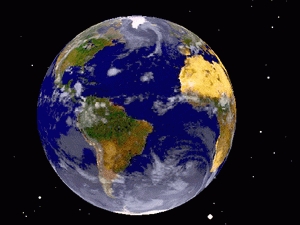On August 5, scientists at Joseph Fourier University (France) published a new study on Earth's core. This new theory differs from the traditional theory of forming the core of a living human planet.

According to traditional theory, the Earth's spherical core does not move and grows steadily in all directions as the Earth cools down.
New research results show that the inner hardware of the planet's core can continue to swim eastward in the outer liquid part of the core.
In this process, the hard core keeps growing due to receiving the physical part of the liquid core. The crystalline material in the western core will melt to the east within 100 million years.
According to the new hypothesis, about 1 billion years ago, the center of the Earth began to harden. The hottest part of the Earth can be hotter than the surface of the Sun. Iron molecules under extreme pressure have hardened and pushed lighter molecules onto the liquid part of the Earth's core. This movement created the Earth's magnetic field.
French scientists believe that the results of this study further illuminate the understanding of age, the imbalance of seismic, the enveloping super-heavy coating of the Earth's core.
The eastward movement of the Earth's core hardware also explains the Earth's western hemisphere always has a heavier weight than the Eastern hemisphere.
 The truth about the mysterious red-haired giant at Lovelock Cave
The truth about the mysterious red-haired giant at Lovelock Cave Inunaki Tunnel: The haunted road leading into Japan's 'village of death'
Inunaki Tunnel: The haunted road leading into Japan's 'village of death' The mystery of the phenomenon of human reflection before dying
The mystery of the phenomenon of human reflection before dying 6 mysterious phenomena, although science has been developed for a long time, still cannot be answered
6 mysterious phenomena, although science has been developed for a long time, still cannot be answered